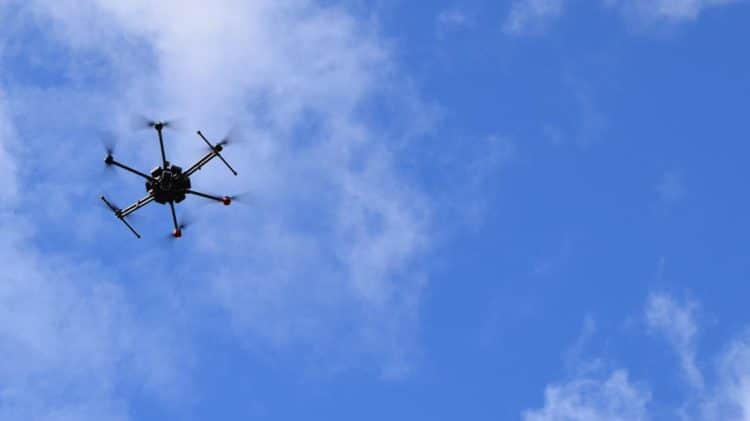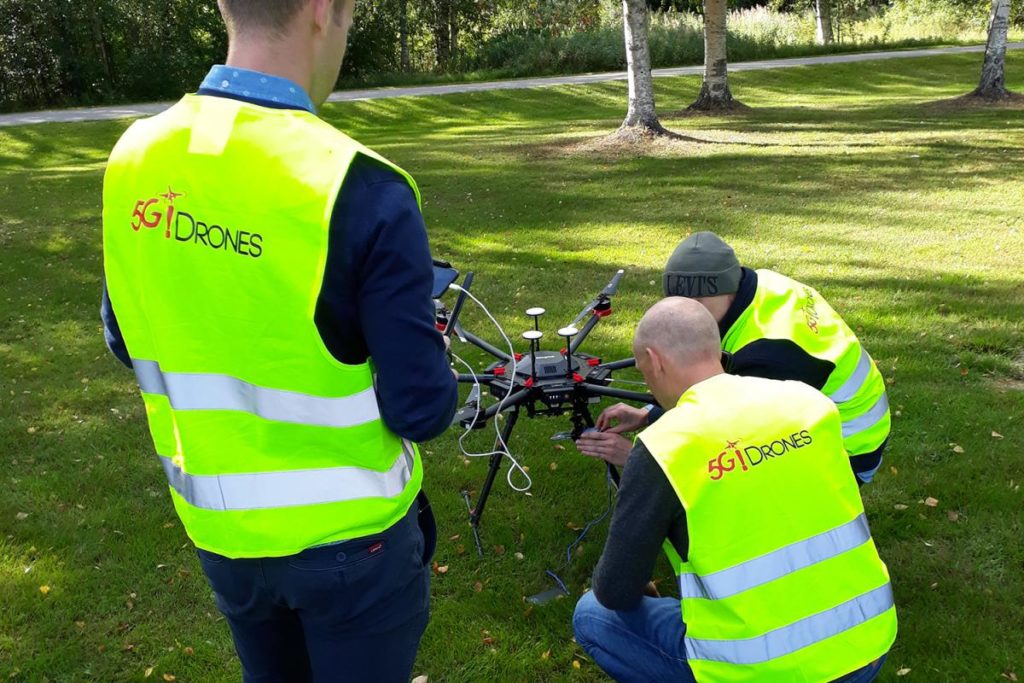
Feasibility tests for future air mobility
Ambitious project plans with tight schedules have faced drastic delays due to the pandemic, which has put a halt on mobility and has limited access to research premises and equipment. One of the multipartner projects forced to redraft its research steps is the EU-funded ICT project 5G!Drones. Committed to trial selected use cases for the most prominent unmanned aerial vehicle (UAV) applications, the project relies on the complementary expertise from 20 organisations around Europe, both universities and companies.
“The feasibility tests provided us with much insight on which portions of the trials can be safely executed remotely and what kinds of experts are required on-site,” says Dr. Jussi Haapola from the University of Oulu who co-ordinates the project. “It was also relieving to note that with appropriate planning both on-site and off-site collaboration can be managed, even though the pandemic situation brings forth uncertainty.”
The goals of the feasibility tests included integration, legislative, network coverage and service level, and exact trial site identification aspects. With regards to integration, the drone operator had its mission software installed at a 5G Test Network (5GTN) edge server in Oulu and operated the mission remotely from Estonia. The 5G quality-of-service and 3D mapping missions were uploaded to the drone and managed realtime using 5G cellular connectivity. A drone carried a 5G cellular handset for the 5G quality-of-service measurements and de-livered the information to the drone operator in real time. Legislative aspects, on the other hand, included obtaining permits to fly the drones equipped with cellular devices, mission planning and all relevant documentation for safe execution of the feasibility tests.
Furthermore, network coverage, service level and exact trial site identification aspects included testing of the components required for missions as well as mapping the areas around 5GTN, at various elevations, for identification of 5G signal quality and performance.
“The upcoming trials themselves will involve the validation of both 5G and UAV key performance indicators (KPIs) – 5G being able to fulfil its generic KPIs and UAV specific ones, and UAV vertical sector being able to fulfil its use cases KPIs by exploiting 5G features,” Haapola says.
5G and beyond 5G cellular communications solutions take drones one step further towards autonomy by providing reliable beyond visual line-of-sight (BVLoS) connectivity for extended drone operations. Reliable remote operations and management are key requirements in enabling urban air mobility in smart cities.
“The use of drone services at the network edge to operate and manage missions is a significant milestone paving the way to next breakthroughs in service migration based on drone mobility,” Haapola says.
“Edge deployments minimise the command and control delay between drones and their operators and provide crucial data offloading capabilities for a number of rea-time, high bandwidth consuming solutions like high quality video streaming, lidar, 3D-mapping, and so forth.”
The integration of drones in smart cities involves addressing many of the challenges required for U-space advanced or full services.
“The UAVs need to be able to communicate not only with one another, but with the unmanned aerial systems traffic management (UTM), the drone operator, the city urban air mobility infrastructure, the service provider, and the customer,” Haapola says.
“The drone missions need to secure a certain service level from mobile operators throughout the mission requiring an intricate interplay with communications, service virtualisation and migration, advanced data processing, and automated flow of information between multiple actors.”
The autonomy of drones, on the other hand, is a long-term goal, closely aligned with U-space development targeting 2035. Currently, especially professionally operated drones Verticals & Business support many automated operations, including completely automated missions. However, there always exists a drone operator supervising the missions and an on-site safety pilot who can take over in situations the drone is not capable of handling. Other automated features include, for example, obstacle and collision avoidance, and return-to-home features.
Drone swarms, which are gaining a lot of interest, are very useful in search and rescue operations where they can reliably cover large distances in a short amount of time. Control of drone swarms require wireless mesh connectivity between drones, collaborative localisation schemes, swarming management, as well as interfacing of swarms with other actors, including U-space. Other use cases include large area 3D or lidarmapping for agricultural purposes, forest mapping, or even cave system mapping. For example, 3GPP is currently working on enhanced cellular V2X standardisation that could be a good starting point for all cellular swarm management. This kind of required feature set probably co-aligns with U-space, U3 – advanced services targeting 2027.

In the meanwhile, researchers tackle challenges in carrying out validation activities, from day to day. Yet, COVID-19 has brought attention to the capabilities of UAVs in somewhat unexpected ways. “The pandemic situation has also shown the potential of UAV applications in remote parcel delivery and remote safety surveillance, among other things,” Haapola says.
Check updated news about the project here.